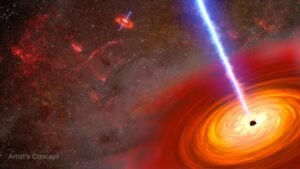
NASA has announced a significant decision regarding the Boeing Starliner spacecraft: it will return to Earth without astronauts Butch Wilmore and Sunita Williams aboard. This decision, made public on Saturday, underscores NASA’s commitment to safety in its space operations.
Mission Background and Decision
The Boeing Crew Flight Test, which launched in June 2024, was intended to test Starliner’s capabilities in transporting astronauts to and from the International Space Station (ISS).
However, technical issues encountered during the mission have led NASA to opt for an uncrewed return.
NASA Administrator Bill Nelson emphasized the inherent risks of spaceflight, particularly in test missions: “Spaceflight is risky, even at its safest and most routine. A test flight, by nature, is neither safe, nor routine. The decision to keep Butch and Sunita aboard the International Space Station and bring Boeing’s Starliner home uncrewed is the result of our commitment to safety: our core value and our North Star.”
Technical Challenges
On June 6, as Starliner approached the ISS, NASA and Boeing identified helium leaks and experienced issues with the spacecraft’s reaction control thrusters.
Since then, engineering teams have:
- Reviewed extensive data
- Conducted flight and ground testing
- Hosted independent reviews with agency propulsion experts
- Developed various return contingency plans
Despite these efforts, the uncertainty and lack of expert concurrence do not meet NASA’s stringent safety and performance requirements for human spaceflight.
Impact on Crew and Future Plans
Astronauts Wilmore and Williams will continue their mission on the ISS as part of the Expedition 71/72 crew through February 2025. They are now scheduled to return to Earth aboard a SpaceX Dragon spacecraft with the Crew-9 mission.
Key points about the revised plan:
- Starliner is expected to depart from the ISS and make an autonomous re-entry and landing in early September 2024.
- The Crew-9 mission launch is now scheduled for no earlier than Tuesday, September 24.
- NASA and SpaceX are reconfiguring seats on the Crew-9 Dragon and adjusting the manifest to accommodate Wilmore and Williams.
Ken Bowersox, associate administrator for NASA’s Space Operations Mission Directorate, noted: “We’ve learned a lot about the spacecraft during its journey to the station and its docked operations. We also will continue to gather more data about Starliner during the un-crewed return and improve the system for future flights to the space station.”
Steve Stich, manager of NASA’s Commercial Crew Program, added: “Starliner is a very capable spacecraft and, ultimately, this comes down to needing a higher level of certainty to perform a crewed return. The NASA and Boeing teams have completed a tremendous amount of testing and analysis, and this flight test is providing critical information on Starliner’s performance in space.”
This decision, while altering the original mission plan, demonstrates NASA’s unwavering commitment to astronaut safety and the rigorous standards applied to human spaceflight. The un-crewed return of Starliner will provide valuable data for future improvements and missions. As NASA continues to push the boundaries of space exploration, the lessons learned from this mission will contribute to the ongoing development of safe and reliable spacecraft for both low Earth orbit operations and future deep space missions.
Read more at: Commercial Crew
Source: NASA

